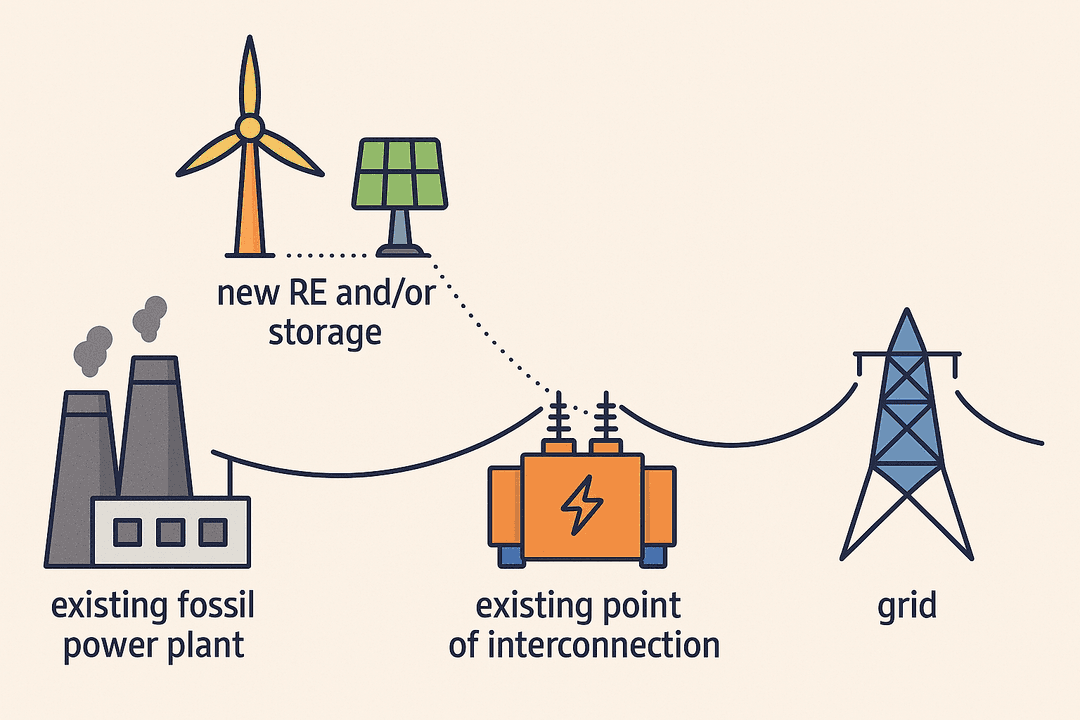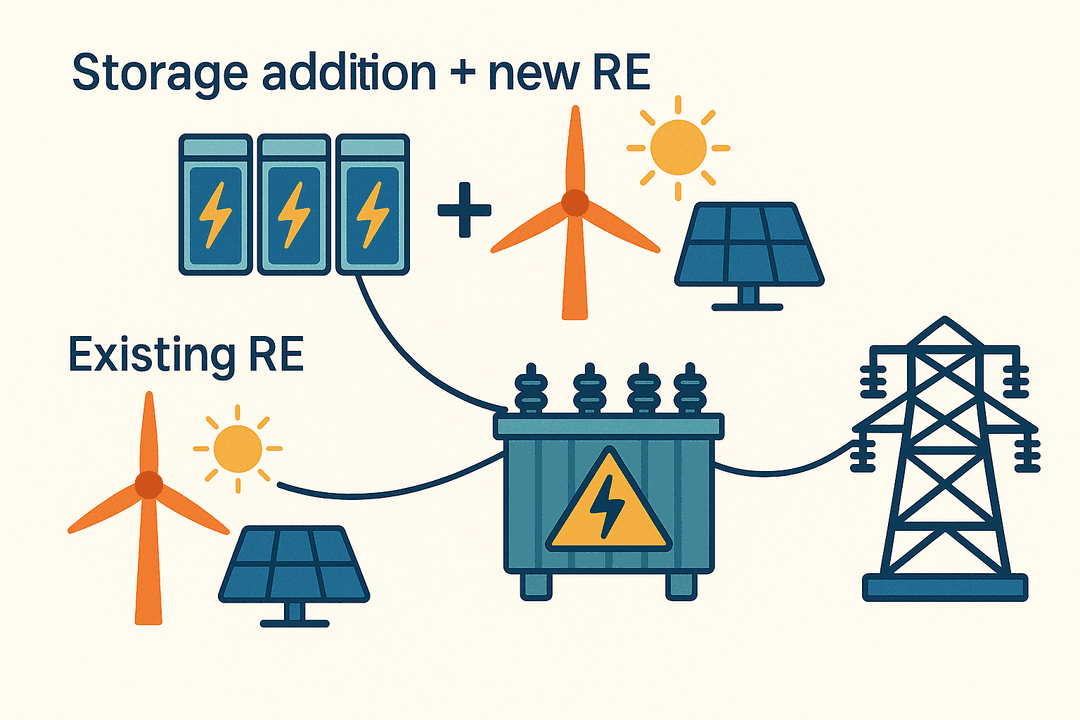ConsolidatedConnectionin UK
Accelerating Clean Energy Deployment by Leveraging Existing Grid Infrastructure
The UK's clean power transition faces critical grid connection bottlenecks threatening 2030 targets
The Problem
Massive Queue Bottleneck
The UK's grid connection queue has 474 GW of capacity waiting with average delays of 5-7 years. The queue includes solar (146 GW), storage (126 GW), and wind (127 GW), with 400 GW (84%) being renewable and storage technologies.
Rising Capacity Costs
UK T-4 Capacity Market prices have surged to near-record levels of £60/kW in 2024, up from £15.97/kW in 2020, reflecting a 275% increase. This signals a systemic shortage of firm, dispatchable capacity and increasing costs for consumers.
Clean Power 2030 at Risk
The UK needs to double its installed capacity to meet its 2030 clean power targets, requiring a 2-3x acceleration in the current rate of renewable deployment. With electricity demand projected to grow by 40% by 2030 driven by transport electrification and data centers, current grid connection delays threaten these critical goals.
The Solution: Consolidated Connection
Consolidated Connection for the UK
Consolidated Connection (surplus TEC) allows new electricity supply resources to connect to the grid using existing infrastructure that serves already operating generators, without exceeding the total output capacity already allocated to the existing resource. This approach can bypass the congested queues by utilizing spare capacity at existing grid connection points.
Key Results
Available Surplus Capacity
The UK can add 93 GW of clean energy capacity through consolidated connection, including 55 GW of solar, 17 GW of wind, and 21 GW of energy storage at existing sites without new transmission.
Clean Power 2030 Goals
Consolidated connection can meet 94% of the UK's Clean Power 2030 targets for solar, onshore wind, and battery storage, dramatically accelerating the path to clean power.
Time & Cost Benefits
Consolidated connection projects can be completed in 1-2 years compared to 5-7 years for new grid connections. RE and storage deployment using consolidated connection can save over £9B in grid connection costs and expensive transmission upgrades.
Thermal Grid Connections
The UK has 37 GW of gas-fired thermal capacity operating at only 35% capacity factor, leaving 65% of their grid connection capacity idle. Over time, these gas plants will increasingly act as backup assets, running at even lower capacity factors. By co-locating new solar and wind generation at these sites through consolidated connection, we can bypass the 474 GW queue backlog and accelerate clean energy deployment.

Key Results
Abundant Local Resources
449 GW TotalWe analyzed 85 thermal plants. Over 408 GW of solar and 41 GW of wind potential exists near UK thermal plants. This renewable resource can enable clean energy deployment at existing grid connection points.
Urban Area Plants
275 MW RemovedOnly 3 facilities totaling 275 MW capacity lie in urban areas out of the 85 analyzed. We removed these plants from the consolidated connection analysis though they are great candidates for battery storage.
Cost-Effective Today
100% ViableAt 100% of existing fossil plants, building new solar and wind is already cheaper than running the existing plant. The LCOE of local solar and wind is lower than the variable operating cost at all 37 GW of thermal capacity.
Ready for Renewables
44 GW Potential44 GW of renewable energy (37 GW solar and 7 GW wind) can be economically integrated at UK thermal plants, utilizing existing grid infrastructure.
Quick Wins Available
Peaker PlantsMany peaker plants operate for only a few hours per year and are currently used as backup assets only during the highest peak load times. They are the best candidates for consolidated connection.
Renewable Grid Connections
UK renewable plants have low capacity factors (9.4% solar, 27.7% wind) resulting in only 6-7% firm capacity value due to intermittency issues. Adding 4-hour battery storage can dramatically increase capacity value and utilization rates to levels comparable to baseload gas plants, effectively turning variable renewables into firm power resources.

Key Results
Massive RE Potential
4500 GW TotalWe analyzed 683 renewable plants (all UK renewable plants above 10 MW). Approximately 4073 GW of solar and 407 GW of wind resource potential exists within 6 miles of existing RE plants.
Urban Area Plants
197 MW RemovedOnly 4 facilities totaling 197 MW capacity lie in urban areas. We removed these from the consolidated connection analysis though they remain excellent candidates for battery storage.
Expanded RE Capacity
52 GW CombinedUK's existing renewable grid connections can support 18 GW of additional solar, 10 GW of wind, and 21 GW of storage without new grid connections.
Enhanced Grid Value
41.7% (4hr) | 62.7% (6hr)Battery storage dramatically increases the derating factor (capacity value) from 6-7% for standalone renewables to 41.7% with 4-hour storage and 62.7% with 6-hour storage, approaching the 88% value of gas CCGT plants.